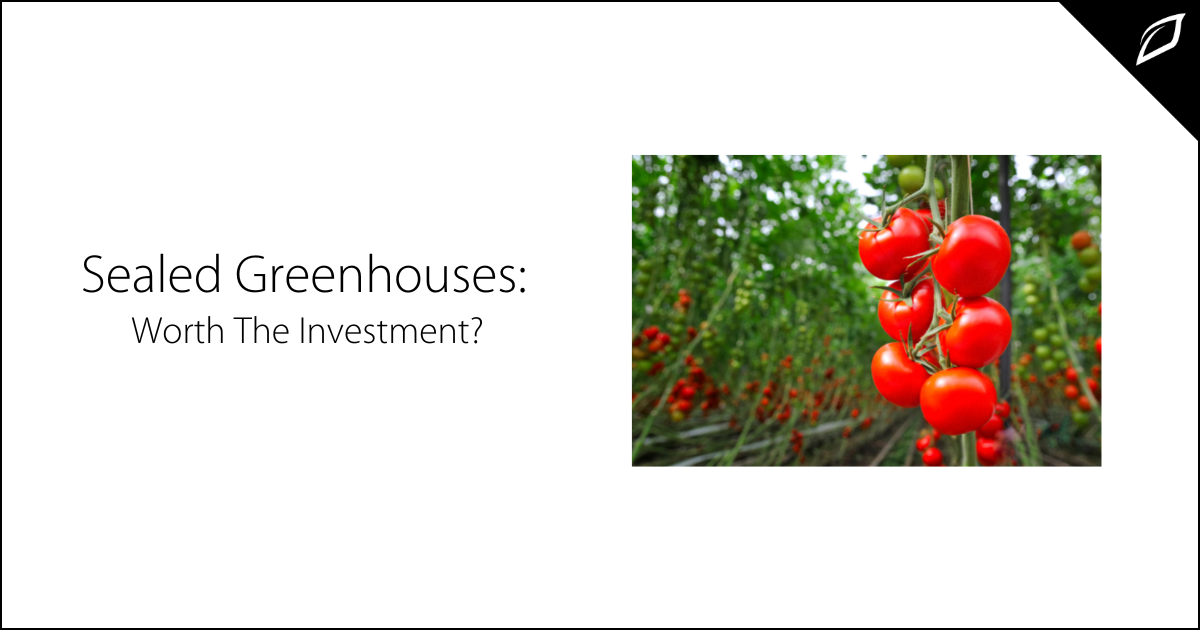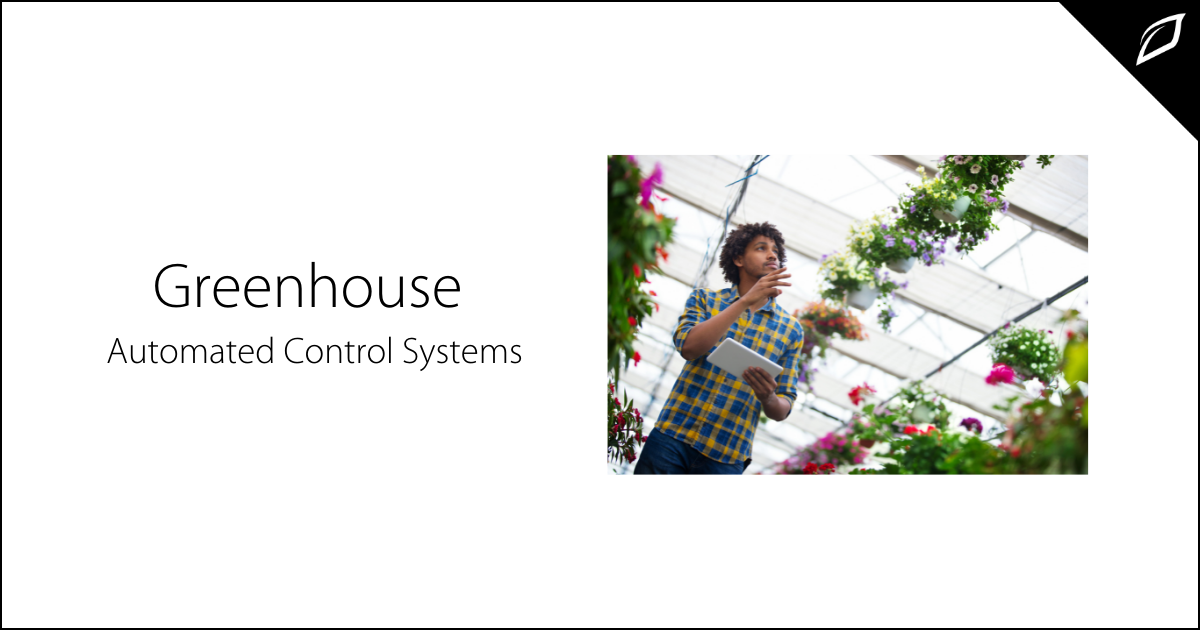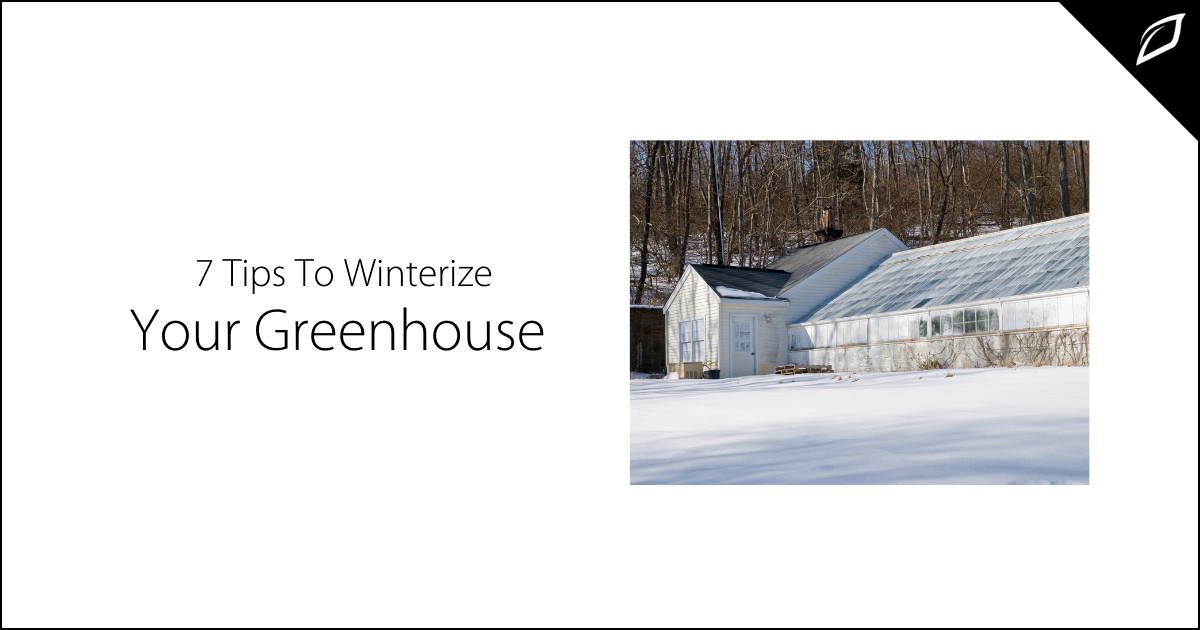Sealed Greenhouses: Worth The Investment?
Many modern farmers are turning to sealed greenhouses over traditional ventilated greenhouses. Heavy ventilation is required daily to combat...
2 min read
Joy King : May 26, 2021 4:00:00 AM
.png)
The modern greenhouse utilizes technology to automate many daily tasks associated with a bustling grow operation. It can be confusing and overwhelming to decide which system is right for your specific needs and goals. In a world where technology moves rapidly, commercial growers require productivity and predictability in their greenhouse technology. If you need to replace an older system that can no longer provide the dependability you need, or you're interested in new technological advancements of fully cloud-based automatic grow systems, here are the basics. Let's look at ways technology helps growers increase yields, improve productivity, and provide peace of mind.
What is climate-controlled greenhouse technology?
Greenhouse Technology is the technique of creating beneficial environmental conditions for plants or crops, along with automation. While it's used primarily to protect plants from unfavorable climatic conditions, it's evolved to provide increased yields and reduced labor and resource costs. As a self-contained environment, greenhouses are easily controlled. Commercial growers now have a wide range of technologies to ensure the highest productivity levels with the least amount of labor.
The modern smart greenhouse represents the convergence of sophisticated scientific know-how available from various software and hardware solutions.
Greenhouse Controllers
Greenhouse environmental controllers deliver a high level of greenhouse management efficiency through automation, allowing growers to maximize their yields while lowering expenses. Smart motor controllers can open and close vents, turn on or off lights, all from the palm of your hands via smartphone apps. Controllers are pre-programmed with predetermined specifications based on criteria received from sensors located throughout the greenhouse. Let's dive into sensors.
Sensors
Sensors throughout a greenhouse measure temperature, humidity, CO2, light, and VPD, WC, and EC so that your grow room controller can automatically adjust conditions to ensure your growing environment has the ideal conditions at all times. You'll spend less on labor and save hours by monitoring the dozens of variables that go into greenhouse management virtually through an app. The sensor feeds crop-level data to an operating system that controls motors to open or close based on triggers. Now let's examine how automation brings it all together.
Automation
By automating processes, growers can increase crop yields by ensuring a consistent environment and saving money by lowering energy use and decreasing labor costs. Better yet, this means growers have the time and energy to pursue business expansion, collaborations, or other interests. The internet of things (IoT) delivers a robust solution with sensor triggers and automation to fully complete the cycle.
Data
Greenhouse controllers can track data over time, giving the grower insight into which combinations of irrigation, nutrition, lighting, and humidity promote the highest yields. Leveraged across multiple harvests, this data can help growers maximize their output while making effective use of resources and minimizing operating costs.
Bottom Line
When picking a company to buy from, there are many other considerations because their technology will continuously evolve, making them your technology partner, more than vendors you buy from. We recommend choosing a company that offers advanced customer support to assist in complicated installations and upgrades. Other relevant factors include the size of your operation, technical prowess, long term goals, and funding.
These systems can be costly, but long term savings on things like labor costs, energy consumption, and nutrient waste will make up for it in the long run. When you factor in increased yields, improved crop quality, and the ability to predict yields more accurately, the system will eventually pay for itself.
-png.png)

Many modern farmers are turning to sealed greenhouses over traditional ventilated greenhouses. Heavy ventilation is required daily to combat...

Greenhouses maintain a thriving environment that is about more than just air temperature, combining various factors that influence plant growth like...

While outdoor growers are busy harvesting, greenhouse growers know that Fall is the best time to prepare for cold months ahead. Winter is fast...